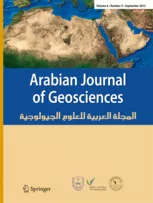Morphometric characterization and monitoring of Al-Asfar Lake in Al-Hasa governorate, Saudi Arabia
The Al-Asfar surface area during minimum, intermediate, and maximum water levels was compared from Landsat satellite images corresponding to 1988, 2001, and 2015. In this research, two stages were applied for the remote sensing data, first, unsupervised classification with the k-means algorithm, and the second vegetation index is the normalized difference vegetation index (NDVI). For the best discrimination between the water, land, and vegetation and to validate the results using a high spatial resolution image from Spot 6, a remote sensing technique was used, including a comparison of unsupervised classification and short-wave infrared thresholding techniques on Landsat images and Spot. The results of the water surface area for both the reference image (Spot) and OLI 2017 for the three parts of the lake are shown. The results of the water surface area in the first part are almost equal to those of both the reference image and OLI, where the area is estimated to be approximately 6.7 km2 and 6.84 km2, respectively. The perimeter of the first part gradually increased from 1988 to 2015, whereas the second part showed a noticeable difference in the perimeter during different years, such as 1988, which was estimated to have the smallest perimeter. The total perimeter length for 2015, 2001, and 1988 was 109.37, 143, and 63.25 km, respectively. Finally, this study recommended measuring the water quality of this evaporating lake, such as the chemical, physical, and biological statuses using similar data and techniques.
Year
2021
Publication Source
Arabian Journal of Geosciences
Publication type
Scientific Paper









